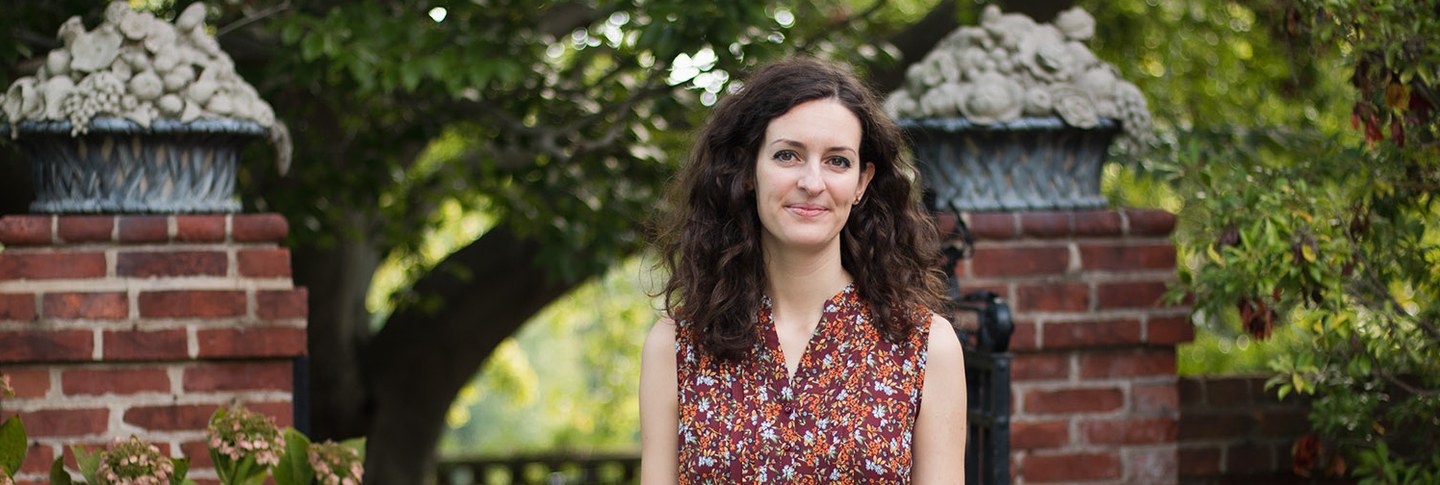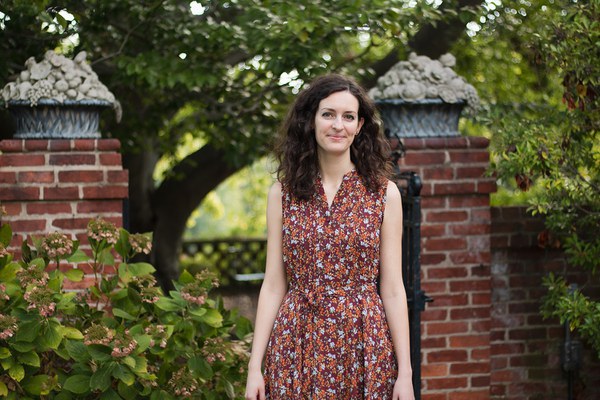Flavia Vanni, a PhD candidate in Byzantine studies at the University of Birmingham, was a recent junior fellow in Byzantine Studies. Her research report, “Byzantine Stucco Decoration: Cultural and Economic Implications Across the Mediterranean World, 850–1453,” assembled evidence for stucco use in terms of artisans and workshop practices, iconography, patronage, and Byzantine perception.
Q&A with Flavia Vanni
Why study stucco?
For many people, stucco is associated with copies. Museums like the British Museum, universities like Oxford and Cambridge, and collections of ancient art used the material to make casts of ancient statues they couldn’t bring from Greece or other places—students would study the plaster casts. (Plaster and stucco are interchangeable here and in the Middle Ages, whereas in the Renaissance, “stucco” was solely used to describe mixtures made of lime.)
The problem is that stucco has not been treated at all by Byzantinists except for very specific publications. The material has continued to be used from antiquity to today. We know something about stucco in the first centuries of Byzantium. There are famous examples from Hagia Sophia, Ravenna, and Poreč. But there is no study about the evolution after that; we don’t have a bird’s-eye view of nearly six centuries of stucco use.
I am providing the first synthetic study of stucco between the ninth and the fifteenth century. We need to know what was happening during that time, what changed from the previous period and from antiquity. While at Dumbarton Oaks, I completed a draft of this study and consulted archival material, especially notebooks from the restoration of the Hagia Sophia. I am going to submit my thesis in December 2020.
I hope my study can open the way to systematic archaeometric analysis on this material, including chemical and noninvasive techniques to determine stucco mixtures. It’s been used on frescoes, but not on the cornices that frame them! We need to know how the technique evolved in order to preserve them well. Thanks to the generous support of the Mary Jaharis Center for Byzantine Art and Culture, I will be able to collaborate with an art diagnosis center in Greece to start testing some case studies.
As with any material, you don’t just have a stucco object: the object is a product of the person who made it. Through the object, you can get information about the person or the group of people involved. Since stucco in Byzantium has not been very well-studied, we’re also missing the histories of these people.
Who worked with stucco?
Artisans. In some cases there were stucco specialists, but in other cases painters and sculptors could have worked this material—written sources show evidence for both specialists and multitasking artisans. So I cannot make a generalization because the material evidence is so varied that I evaluate case by case.
For example, in the twelfth-century church of Saint Panteleimon in Nerezi in Northern Macedonia, I agree with other scholars that the stucco was worked by the same people who were working the marble. In other cases, it is less clear because the plaster of the paintings on the wall continues directly into the molded plaster of the stucco. So in that case, either the artisans were working side by side on the same scaffolding, or they were the same person.
Why would someone choose stucco decorations for a church?
When you decorate a building, there are unwritten rules—conventions that come from your culture. One convention that continued from antiquity into Byzantium was using stucco for architectural decorations; authors writing on architecture such as Vitruvius, Isidore of Seville, and Agnellus Ravennatis tell us about it. It was a material people had in mind because it had been there for centuries.
In specific cases, like some thirteenth-century churches in Epiros, there are liturgical furnishings, like a templon or the iconostasis which are 3D sculptures made from stucco. I think they used stucco because it is a material readily available and signifies local identity, since that kind of stucco production is circumscribed to the area. Stucco can also be an affordable material. Some areas are poor of marble (e.g., Cyprus and Epiros), whereas the materials that compose stucco (gypsum and lime) are widespread in the Mediterranean soil. Also, to make stucco, you can bring your gypsum and lime powder to the church and work there. It is potentially an infinitively divisible cargo, unlike a big piece of marble.
We need to bear in mind, especially for 3D carvings, that both marble sculpture and stucco sculpture were painted. So until you got up very close, you wouldn’t realize the difference. But this is also the case for sculptures made of limestone. Therefore, someone would use stucco for entangled reasons of both cultural and utilitarian factors.
Julia Ostmann was 2018–2020 postgraduate writing and reporting fellow at Dumbarton Oaks. Photo by Elizabeth Muñoz Huber, 2018–2020 postgraduate digital media fellow.

